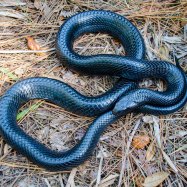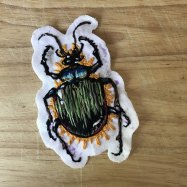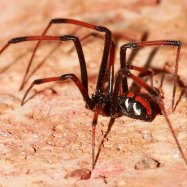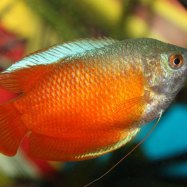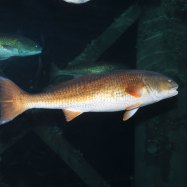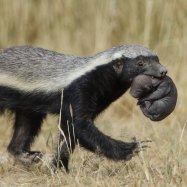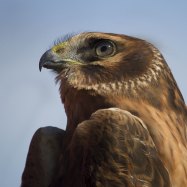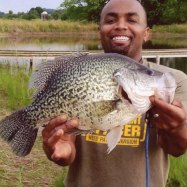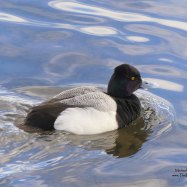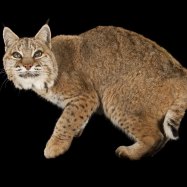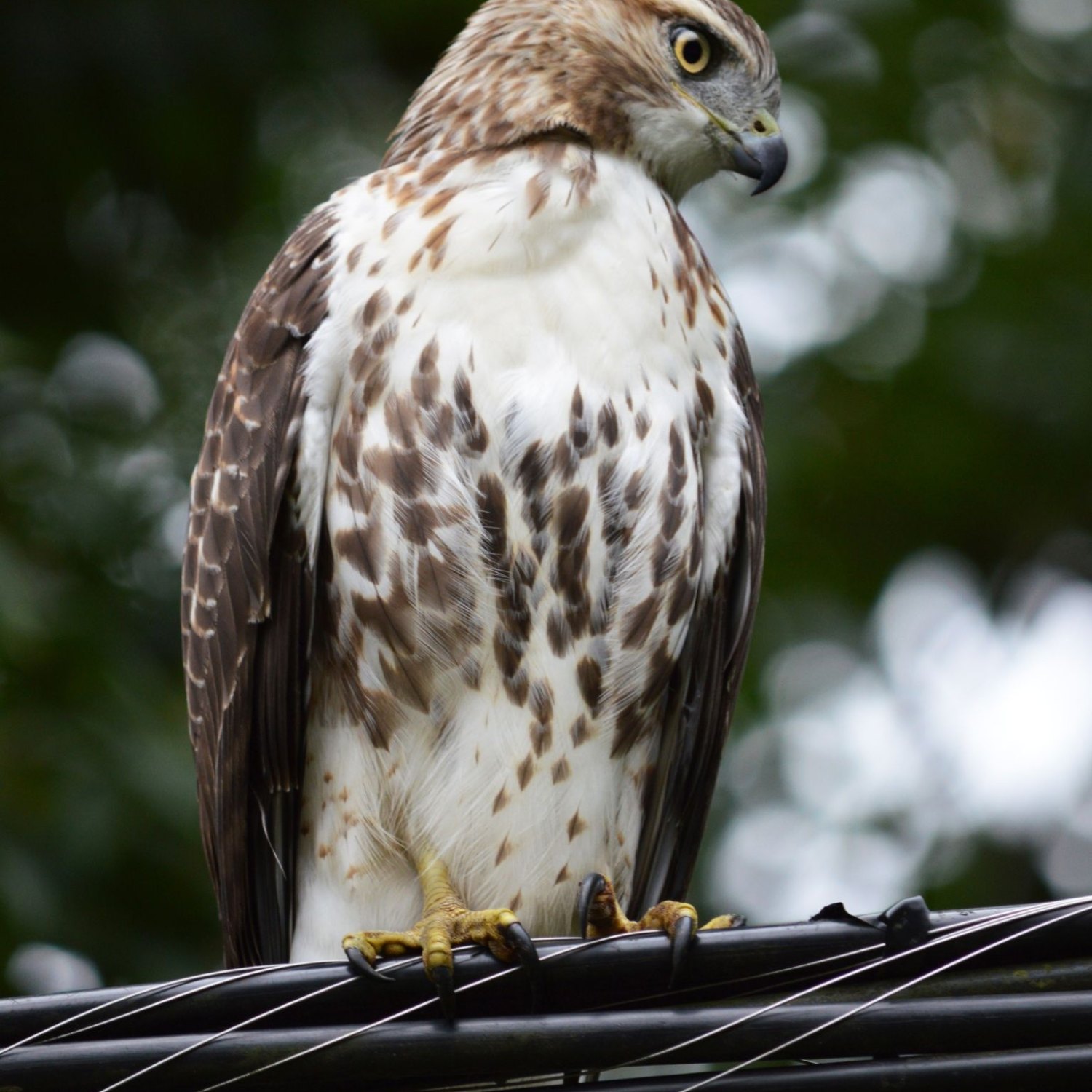
Hawk
18-26 inches
The hawk, a magnificent bird of prey, is a sight to behold! With a body shape of large, broad wings and a long, broad tail, it can reach a length of 18-26 inches. Native to Eastern and Central North America, it belongs to the Accipitridae family. It's a skilled hunter and can dive at high speeds to catch its prey. #Hawk #BirdOfPrey #NorthAmerica
Animal Details Summary:
Common Name: Red-tailed Hawk
Kingdom: Animalia
Habitat: Open country, forests, and woodlands
The Mighty Red-Tailed Hawk: A Master of the Skies
The majestic red-tailed hawk, scientifically known as Buteo jamaicensis, is a beautiful and powerful bird of prey that can be found in the wilds of North and Central America. Also known as the red-tailed hawk, this magnificent creature belongs to the kingdom Animalia and the phylum Chordata. It is classified in the class Aves, order Accipitriformes, and family Accipitridae. With its fierce appearance and impressive abilities, the red-tailed hawk is a captivating animal that has been revered and admired throughout human history Hawk.The Habitat of the Red-Tailed Hawk
The red-tailed hawk can be found in a wide variety of habitats, including open country, forests, and woodlands. They are also known to inhabit urban areas such as parks and gardens, which provide a steady source of food. These birds are highly adaptable and can thrive in almost any environment, but they are most commonly found in the eastern and central regions of North America.Diet and Feeding Habits
As a carnivorous animal, the red-tailed hawk primarily feeds on small mammals such as rodents, rabbits, and squirrels. They are also opportunistic hunters and will occasionally prey on birds, reptiles, and even fish. Red-tailed hawks are fierce predators and have keen eyesight, which allows them to spot their prey from high up in the air. They are known for their exceptional hunting skills, making them one of the most successful predators in the bird world.The Distribution of the Red-Tailed Hawk
The red-tailed hawk is native to North America and can be found throughout the continent, from the United States to Central America. They are primarily found in the eastern and central regions of North America, with some populations also present in the western parts of the continent Harbor Porpoise. Due to their adaptability and wide distribution, these birds are not considered endangered, and their numbers remain stable.The Physical Characteristics of the Red-Tailed Hawk
Red-tailed hawks are large birds of prey with a length of 18-26 inches and a wingspan of up to 4 feet. They have a stocky body shape, with broad wings and a long, broad tail. The females are typically larger than the males, with a weight of up to 4 pounds, while the males can reach up to 3 pounds. These birds have sharp, powerful talons and a sharp, hooked beak, which they use for hunting and feeding.The Coloration of the Red-Tailed Hawk
As their name suggests, these hawks are predominantly brown or reddish-brown in color, with a distinctive red tail. However, their coloration can vary, depending on their age and geographic location. Juvenile red-tailed hawks have a mottled brown appearance, while adults have a dark brown head, back, and wings, with a lighter belly and a red tail. Their coloring helps them blend in with their natural habitat, making them excellent hunters and also providing camouflage from potential predators.The Behavior of the Red-Tailed Hawk
Red-tailed hawks are solitary birds, only coming together during the mating season. They are powerful and skilled flyers, often using their broad wings to soar high in the sky and survey their surroundings. They are also territorial birds and will fiercely defend their nesting sites. During courtship, the male will perform aerial displays to attract a female mate. Once mated, the pair will build a nest together, typically in a tall tree or on a cliff ledge, and will work together to raise their young.The Role of the Red-Tailed Hawk in the Ecosystem
As apex predators, red-tailed hawks play an essential role in maintaining the balance of their ecosystem. They help control the population of small mammals, which can become overpopulated and cause damage to their habitat. In turn, their presence also affects the behavior of other animals in the food chain, as they act as a natural deterrent to potential predators. Without the red-tailed hawk, the ecosystem would be thrown off balance, and the consequences would have a ripple effect on the entire ecosystem.The Threats Faced by the Red-Tailed Hawk
While these birds are not considered endangered, they do face several threats to their survival. One of the primary concerns is habitat loss, as human development continues to encroach on their natural habitat. Another significant threat is electrocution, as these birds often perch on electrical poles and can get caught in live wires, resulting in death. Climate change is also a threat, as it can affect their food sources and migration patterns. To protect and preserve this magnificent bird, conservation efforts must be put in place to ensure their survival.The Red-Tailed Hawk in Culture and Symbolism
Throughout history, the red-tailed hawk has been a symbol of power, strength, and freedom. In Native American culture, this bird is often associated with war, victory, and leadership. They are revered for their sharp vision, keen instincts, and spiritual connections to the land. In modern times, the red-tailed hawk has also become a symbol of conservation and environmental awareness. Their graceful flight and powerful presence have captured the hearts and imaginations of many, making them a beloved icon of the natural world.The Future of the Red-Tailed Hawk
The red-tailed hawk is a resilient and adaptable bird that has managed to thrive in various environments. However, as human activities continue to impact the natural world, it is crucial to protect and preserve these majestic creatures for future generations. Conservation efforts, such as preserving their natural habitats and implementing measures to reduce human-wildlife conflicts, are vital to ensure the survival of the red-tailed hawk. With our efforts and dedication, we can ensure that these incredible birds continue to soar high in the skies and grace us with their powerful presence.

Hawk
Animal Details Hawk - Scientific Name: Buteo jamaicensis
- Category: Animals H
- Scientific Name: Buteo jamaicensis
- Common Name: Red-tailed Hawk
- Kingdom: Animalia
- Phylum: Chordata
- Class: Aves
- Order: Accipitriformes
- Family: Accipitridae
- Habitat: Open country, forests, and woodlands
- Feeding Method: Carnivorous
- Geographical Distribution: North America, Central America
- Country of Origin: United States
- Location: Eastern and central North America
- Animal Coloration: Varies, typically brown or reddish-brown
- Body Shape: Large, broad wings and a long, broad tail
- Length: 18-26 inches
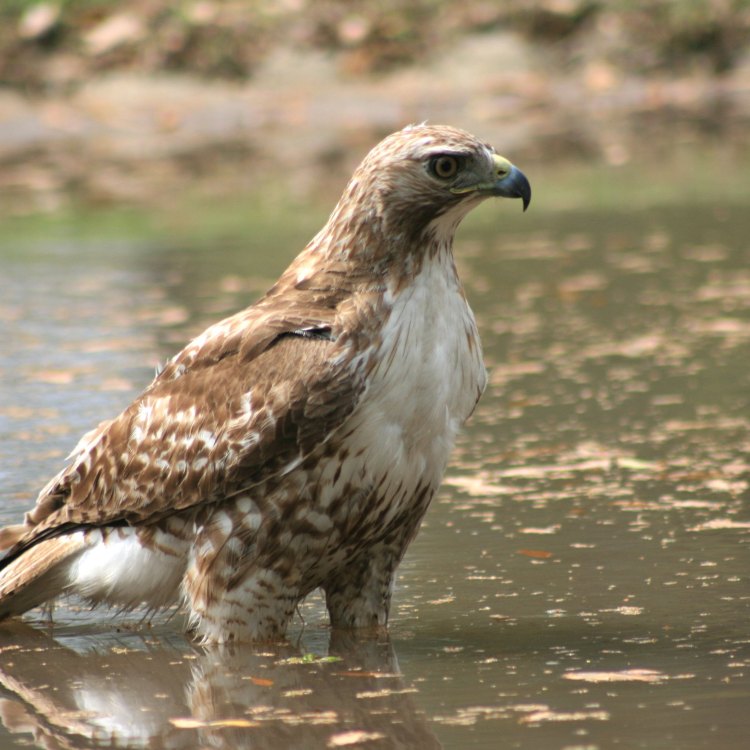
Red-tailed Hawk
- Adult Size: Medium-sized
- Average Lifespan: Up to 21 years in the wild
- Reproduction: Sexual
- Reproductive Behavior: Monogamous
- Sound or Call: High-pitched scream or screech
- Migration Pattern: Partial migrant
- Social Groups: Solitary or in mated pairs
- Behavior: Diurnal
- Threats: Habitat loss, collisions with vehicles, electrocution from power lines
- Conservation Status: Least Concern
- Impact on Ecosystem: Plays an important role in ecosystem balance by controlling populations of small mammals
- Human Use: Falconry, wildlife photography
- Distinctive Features: Red tail feathers, hooked beak
- Interesting Facts: The Red-tailed Hawk is the most common hawk species in North America.
- Predator: Bigger birds of prey such as eagles and owls
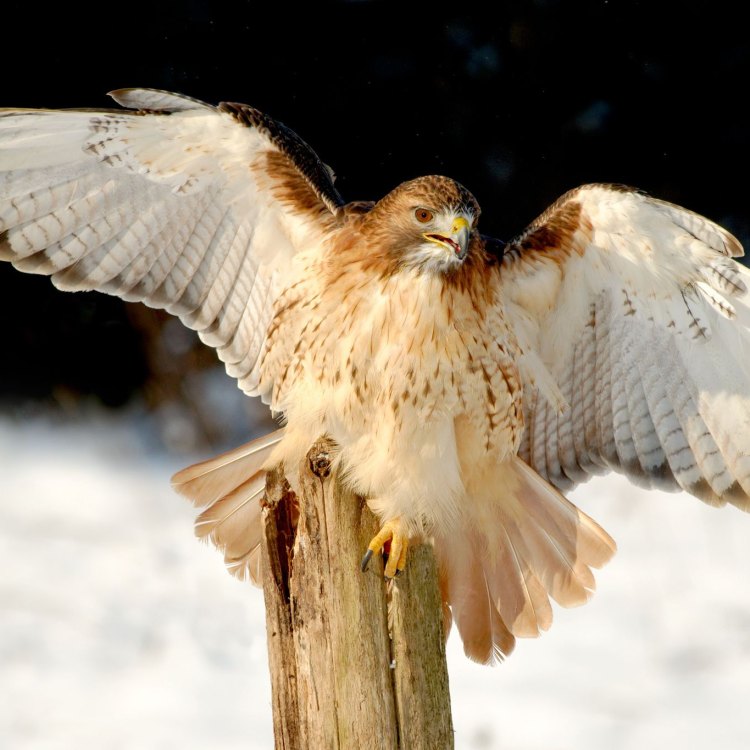
Buteo jamaicensis
The Majestic Red-Tailed Hawk: A Master of the Skies
The sight of a hawk soaring high in the sky, with its sharp eyes and powerful wings, is a magnificent and awe-inspiring experience. Among the many different species of hawks, the red-tailed hawk stands out as one of the most prominent and widespread birds of prey in all of North America. This majestic raptor is known for its distinctive features and impressive hunting skills, making it a widely celebrated species among bird enthusiasts and nature lovers.With its medium size, striking appearance, and fascinating behavior, the red-tailed hawk has become a subject of interest for scientists and researchers, who continue to uncover new insights about this remarkable bird PeaceOfAnimals.Com. In this article, we will take a closer look at the fascinating world of the red-tailed hawk and explore its unique features, behavior, threats, and role in the ecosystem.
Size and Lifespan
The red-tailed hawk, also known as the Buteo jamaicensis, is a medium-sized bird of prey that can reach a length of up to 2 feet and have a wingspan of up to 4 feet. They can weigh anywhere between 1.5 to 3 pounds, with females being slightly larger than males.
In the wild, red-tailed hawks have an average lifespan of up to 21 years, making them one of the longest-living raptors. However, this lifespan can vary depending on various factors such as food availability, disease, and human impact.
Reproduction and Behavior
Like most birds, the red-tailed hawk reproduces sexually, with a monogamous mating behavior. This means that they form long-term pairs and mate for life. Every year, during the breeding season, which usually begins in late winter or early spring, the hawk pairs engage in a spectacular courtship display of soaring and diving together Hippopotamus.
Once the pair has established their bond, they start building their nest together, usually in a large tree or on a cliff ledge. The nest is constructed using twigs, grass, leaves, and feathers and can be up to 3 feet in diameter. These sturdy nests can be used for several years, with the pair adding more materials each year.
The female hawk lays 1 to 5 eggs, and both the male and female take turns to incubate the eggs for about a month. Once the eggs hatch, both parents are actively involved in caring for the young, with the male providing food and the female protecting and keeping the nest warm. After about 6 weeks, the young hawks are ready to leave the nest but will continue to rely on their parents for food and protection for the next few months.
Distinctive Features
The red-tailed hawk has a variety of distinctive features that make it easily recognizable. One of the most prominent features is its striking red tail feathers, which give the bird its name. These feathers are more visible when the hawk is in flight, making it appear as if it has a red-colored tail.
The hawk's beak is another distinctive feature, with a hooked shape and sharp edges that are specially designed for hunting and tearing apart prey. Their feet are also equipped with sharp and powerful talons that enable them to grasp their prey tightly.
Migration and Social Groups
Red-tailed hawks are partial migrants, which means that some individuals will migrate to warmer regions during the winter, while others will stay in their territories year-round. These birds have a wide range and can be found in various habitats, including forests, fields, grasslands, and even urban areas.
These hawks are usually solitary birds, but during the breeding season, they form mated pairs. However, when food is abundant, they may form small groups to hunt together. These social groups do not last long, as the hawks prefer to be territorial and hunt alone.
Behavior and Sound
Red-tailed hawks are diurnal, meaning that they are active during the day, hunting mainly during the early morning and late afternoon. They have excellent eyesight, which allows them to spot their prey from high altitudes. When hunting, they use their sharp talons and beak to catch and kill their prey, which mostly consists of small mammals such as rabbits, squirrels, and mice.
In terms of communication, red-tailed hawks are relatively quiet birds, but they do have a distinctive call. Their cry is a high-pitched scream or screech, which is used for territorial displays or to locate a mate.
Threats and Conservation Status
Despite being one of the most widespread and adaptable hawk species, the red-tailed hawk faces various threats, primarily due to human activities. Habitat loss and degradation, collisions with vehicles, and electrocution from power lines are some of the major threats to these birds.
Fortunately, red-tailed hawks are classified as Least Concern on the IUCN Red List, meaning that their population is stable and not facing any immediate danger of extinction. However, conservation efforts are still crucial to ensure their continued survival, as habitat loss continues to be a significant threat.
Ecosystem Role and Human Use
Red-tailed hawks play a crucial role in maintaining balance in the ecosystem. As predators, they help control the populations of small mammals, keeping them in check and preventing them from overpopulating and causing damage to the environment. This makes them an essential part of the food chain and contributes to the overall health of their habitats.
Apart from their ecological importance, red-tailed hawks also hold significant cultural value for humans. They have been featured in indigenous cultures as symbols of strength, freedom, and vision. Additionally, humans have also used hawks for falconry, a sport of hunting with trained birds of prey, and for wildlife photography, as they are one of the most iconic and photographed birds in North America.
Interesting Facts
The red-tailed hawk has several interesting facts that make it a fascinating species. For one, it is the most common hawk species in North America, with an estimated population of over 2 million individuals. It is also known for its incredible hunting skills, with its exceptional vision enabling it to spot prey from almost a mile away.
Furthermore, this raptor is known to be a fierce defender of its nest and territory. They have been observed attacking and driving away animals much larger than themselves, including dogs and coyotes.
Predators and Coexistence
Although red-tailed hawks are top predators, they do have their own predators. Larger birds of prey, such as eagles and owls, can prey on red-tailed hawks, especially their young. However, this does not pose a significant threat to the species, as their population remains stable.
As humans continue to encroach on their habitat, it is essential to educate ourselves and coexist with these majestic birds. Simple actions like avoiding the use of pesticides and providing safe nesting sites can go a long way in ensuring the survival of these magnificent creatures.
Conclusion
In conclusion, the red-tailed hawk is a remarkable species that continues to captivate and inspire people all over North America. From their distinctive features and behavior to their vital role in the ecosystem, these birds are truly a marvel of nature. As we continue to learn more about them, it is important to appreciate and protect these beautiful birds and ensure their survival for generations to come. So, the next time you spot a red-tailed hawk soaring high in the sky, take a moment to admire its beauty and remember the crucial role it plays in maintaining the delicate balance of nature.
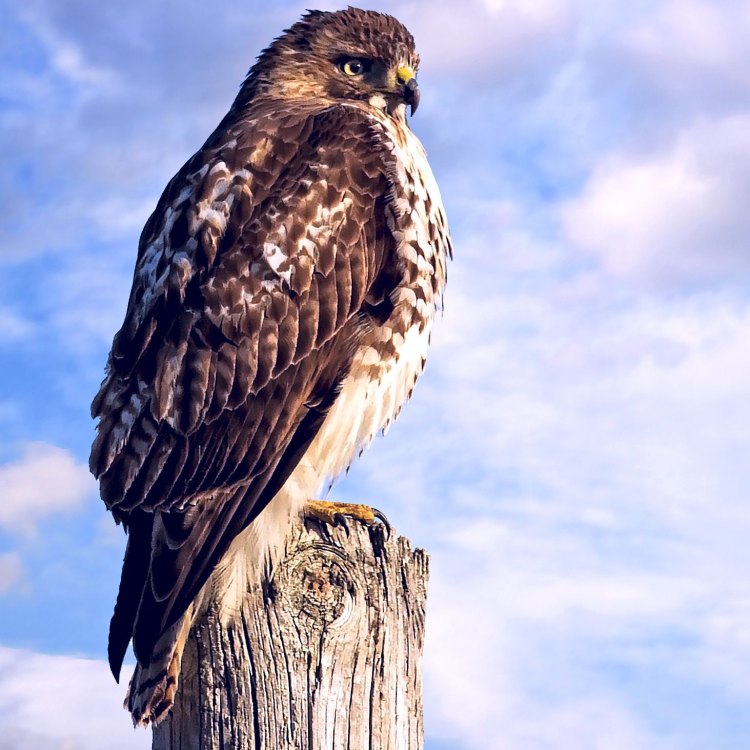
The Mighty Red-Tailed Hawk: A Master of the Skies
Disclaimer: The content provided is for informational purposes only. We cannot guarantee the accuracy of the information on this page 100%. All information provided here may change without prior notice.

